
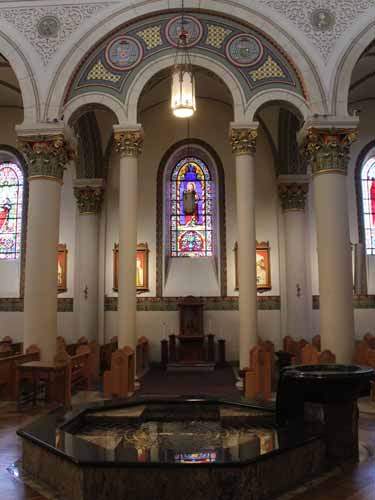
The baptismal font is made of Brazilian granite. The eight-sided form represents the 8th day, or Easter and the resurrection of Jesus Christ.

In the sanctuary is an altar screen (or reredos), created in 1986 for the cathedral's 100th anniversary The 18th-century statue of St. Francis is surrounded by painted images of saints of the New World. Above the altar is the San Damiano Crucifix, a replica of the crucifix in Assisi, Italy.

St. Francis

Some of the saints... St. Philip of Jesus, St. Rose of Lima (apparently the singing nun) and our dear old Guadalupe


Many of the stained glass windows, such as these of the apostles, were imported from France. St. Philip is pictured here.

Not quite sure what St. Thomas is up to!

Eeew.... (although the lighting is amazing!)

Also eeew (but fascinating!)... There was a whole wall of these reliquaries, each housing the physical remains (mostly bones) of various saints or other religious figures.
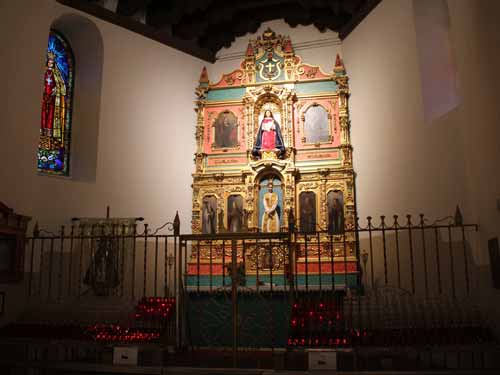
This small side chapel is all that remains of the old church built in 1714.

The small, wooden statue, La Conquistadora (or Our Lady of the Rosary), is the oldest Madonna in the US. Carved from willow in Spain sometime in the early 1600's and called Our Lady of the Assumption, she wore the costume of a Moorish princess. She found her way to Santa Fe in 1625, brought by Franciscan Friars. Her name was changed to Our Lady of the Conception, as was her outfit… to real clothes, including tiny Parisian lace handkerchiefs and ruby earrings. Her name finally settled to Our Lady of the Rosary as these were violent times and prayer was their only weapon. In 1680, Indians attacked, killing 21 padres. They also burned the city and drove out the Spanish colonists, who managed to rescue the small statue from the blazing remains of the church. She waited 12 years before returning.

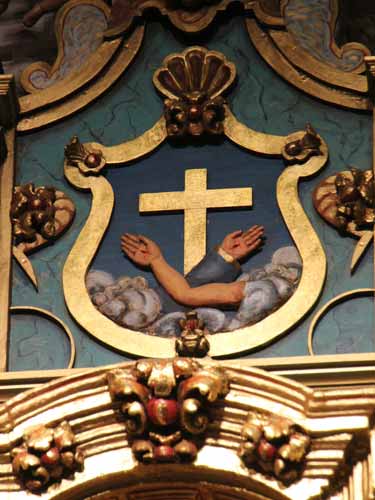


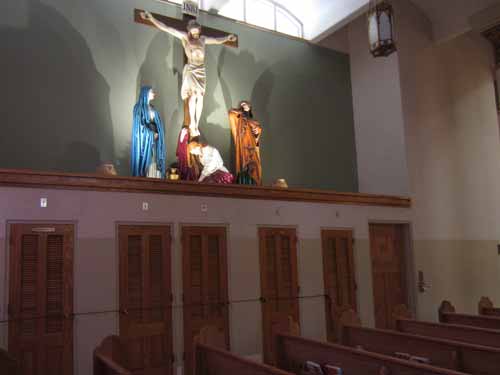
The row of confessionals...

... The cross above the door lights up when occupied!
Outside next to the cathedral was a lovely little garden.

St. Francis preaching to the birds

We walked down the street to the Loretto Chapel. It was equally as enchanting.

The gothic-style chapel was started in 1873 and took 5 years to complete. It was patterned after Sainte Chapelle in Paris and built at the request of Archbishop Jean Baptiste Lamy (here's his name again).

These spectacular pieces of kinetic art moved slowly in the breeze, creating different patterns.

The tree outside the chapel
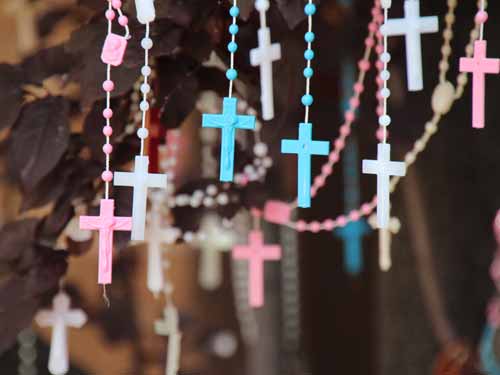

The altar is hand-carved from wood and painted to look like marble. It was made in Italy in 1910.
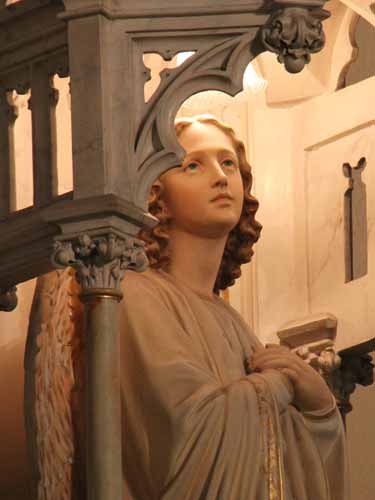


The stations of cross were also from Italy. Originally, stations were mostly outdoors, so one could physically follow along the path with Jesus as he carried the cross to his crucifixion in the final hours (known as the Passion) before his death. They are now more commonly found inside on the walls of a church. Earlier sets only had seven, but the standard number nowadays is 14.
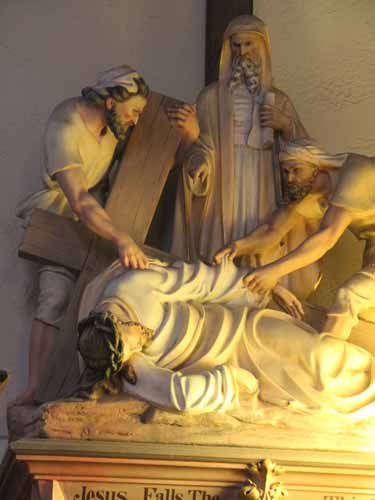
Station number 9: Jesus falls the third time.

Station number 13: Jesus is taken down from the cross (Deposition or Lamentation)



St. Catherine

I believe the holy water was for sale!

The miracle of fish and loaves, maybe?
The chapel's famous 'miracle' is a set of stairs, sometimes called St. Josephs' Staircase. It makes over two complete 360-degree turns, is over 20 feet tall and has no center support. It rests solely on its base and against the choir loft (although it has since been bolted to the wall for safety due to the vibrations from heavy traffic). The 33 steps are all of the same height and it is held together by only square wooden pegs (no glue or nails). The railings were added 10 years later in 1887.

The original staircase...

... and that of today.

The story goes: Once most of the chapel was built, the architect died suddenly. It was then realized there was no way to get up to the choir loft. Doh! Because of the building's small size, a regular staircase wouldn't fit. Also, ladders weren't really an option because of the long, bulky habits the nuns wore. The nuns prayed to St. Joseph for nine days straight. Then a shabby stranger appeared. He told them he could build them a staircase but required absolute privacy. He locked himself in the chapel for several months. He only had a small number of primitive building tools. The staircase is built entirely from non-native wood (although there were no reports of any lumber being delivered). He then disappeared, without payment.
We wandered about a bit and found ourselves at the oldest house in the USA (around 1200). The Upper Crust was an inexpensive pizza place right next door, so we grabbed a bit of lunch... a pesto calzone, a blue cheese salad, and a Samuel Adams Summer Ale.

Yay! Another 'est'!
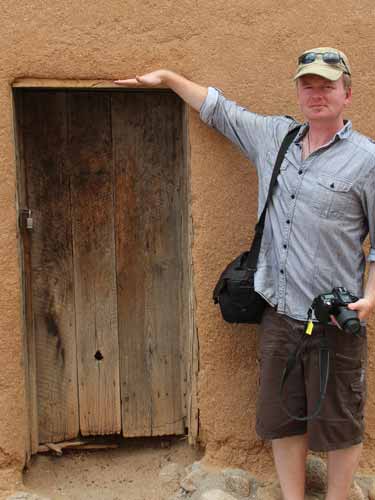
If you notice, the door is actually cheating and doesn't start as low as Regan is.

Next to my 'est'

